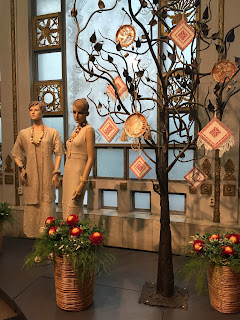We will discuss Market research in this blog post.
SBA advise you on what to include in this section:
Industry Description and Outlook – Describe your industry, including its current size and historic growth rate as well as other trends and characteristics (e.g., life cycle stage, projected growth rate).
Information About Your Target Market – Narrow your target market to a manageable size. Describe your customer. Research and include the following information about your market:
Distinguishing characteristics – What are the critical needs of your potential customers? Are those needs being met? What are the demographics of the group and where are they located? Are there any seasonal or cyclical purchasing trends that may impact your business?
Size of the primary target market – In addition to the size of your market, what data can you include about the annual purchases your market makes in your industry? What is the forecasted market growth for this group? U.S. Bureau of Labor Statistics, trade organizations -are good sources of this kind of information.
How much market share can you gain? – What is the market share percentage and number of customers you expect to obtain in a defined geographic area?
Pricing and gross margin targets – Define your pricing structure, gross margin levels, and any discount that you plan to use.
Competitive Analysis – Your competitive analysis should identify your competition by product line or service and market segment. Assess the following characteristics of the competitive landscape:
- Market share
- Strengths and weaknesses
- How important is your target market to your competitors?
- Are there any barriers that may hinder you as you enter the market?
- What is your window of opportunity to enter the market?
- Are there any indirect or secondary competitors who may impact your success?
- What barriers to market are there (e.g., changing technology, high investment cost, lack of quality personnel)?
If possible, enlist the help from the Business major student who could help you put this part together. With this said you need to understand the figures and the trends. It is very important.
If you feel lost, start with the SWOT analyses. SWOT stands for strengths, weaknesses, opportunities, threats. Organize them in this way:
Internal 1. Strengths 2. Weaknesses
External 3.Opportunities 4. Threats
1- your skills, assets, knowledge, connections, etc.
2- all the disadvantages you can determine that are internal: absence of the customers base, lack of the experience in the field, lack of financing, etc.
3 and 4 are the things that are outside your control that you determine doing your marketing research.
The are all the opportunities or threats that come from the outside (collaborations, legislation, economical trends, interest rate fluctuations, etc.)
Martha Pullen in her book "G.R.A.C.E. Keys to Entrepreneurship" recommends to conduct 2 types of the market research: primary and secondary. Primary research is about getting an objective opinion from you true potential customers. You can tap into your personal network, try to take advantage of the online forums, discussion groups and communities.
I may add that if you are planning to open a business in a certain location, go there and spend a day observing flows of the customers, engaging with them and taking mental notes about their habits. Make sure to learn as much as you can about your competitors in the desired location.
The secondary research is kind of in depth research that we discussed earlier.
I can't not to mention Google. It offers wonderful tools for Marker research. This article helps navigate some of the Google's search options.
Marketing research is time consuming but it is invaluable for the understanding of the environment that you are going to operate you business in. Keep your motivation high!
As always: this article is just a blog post, not a legal advice













